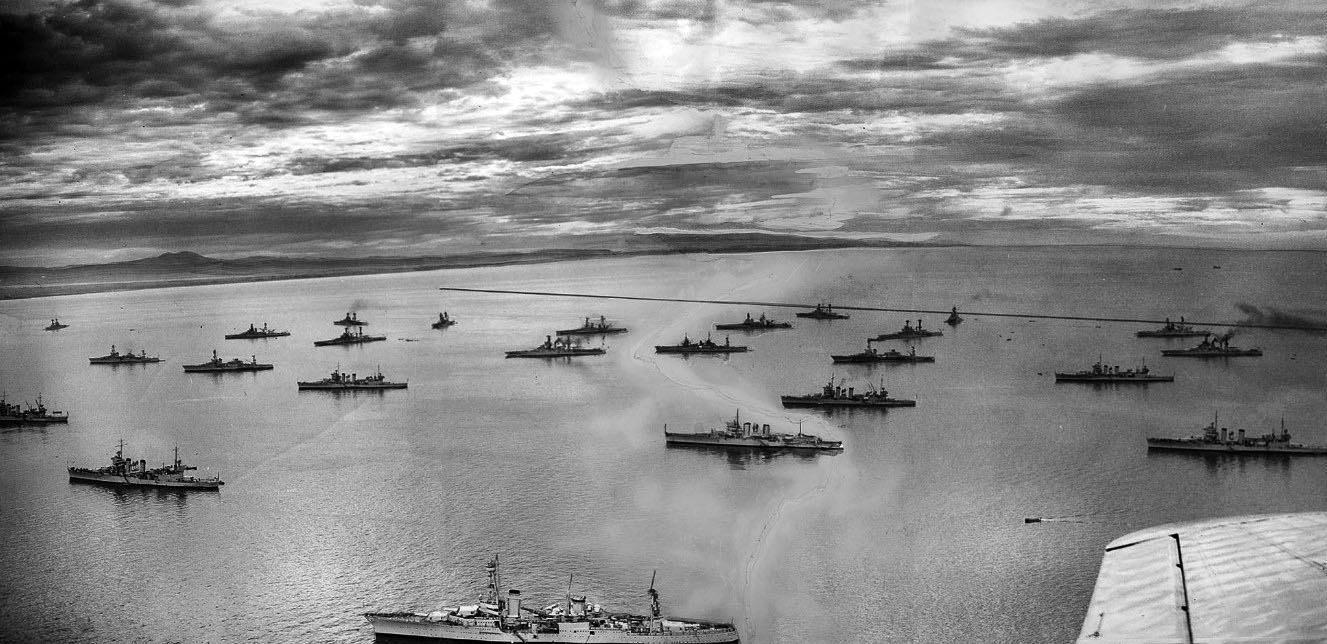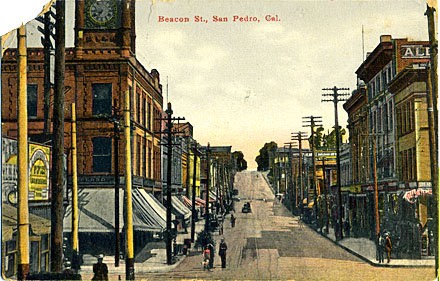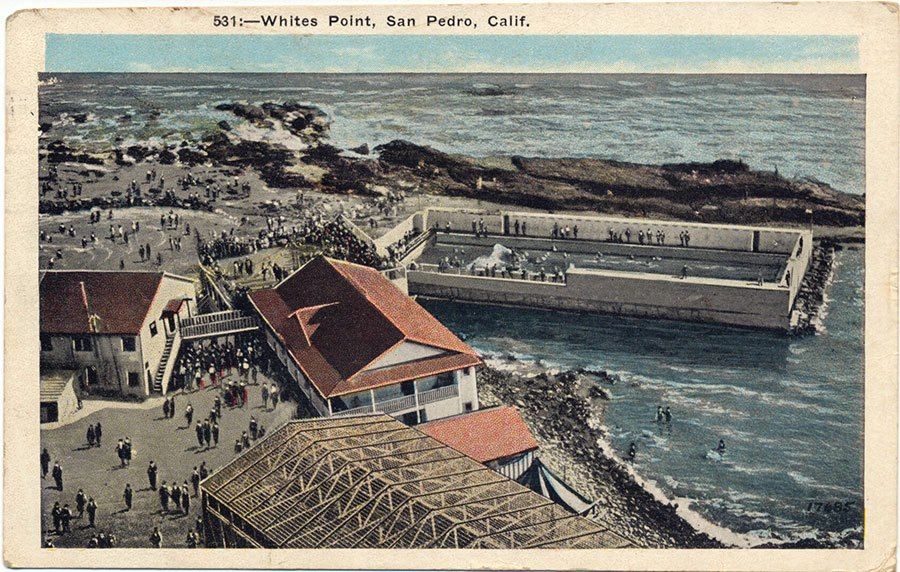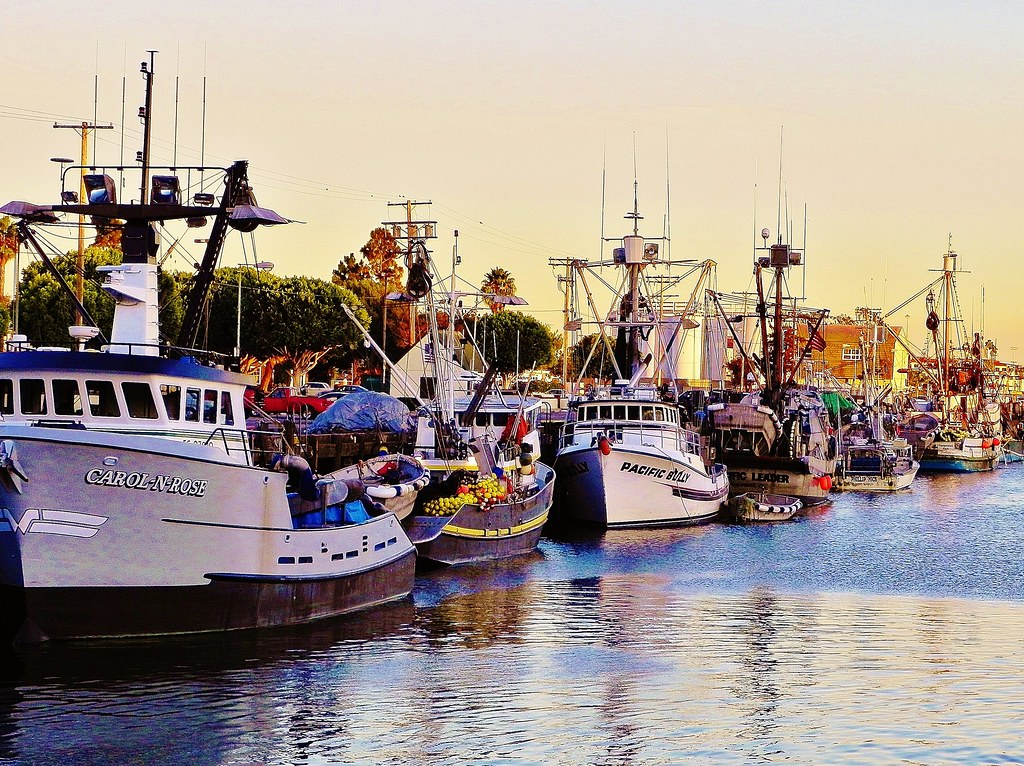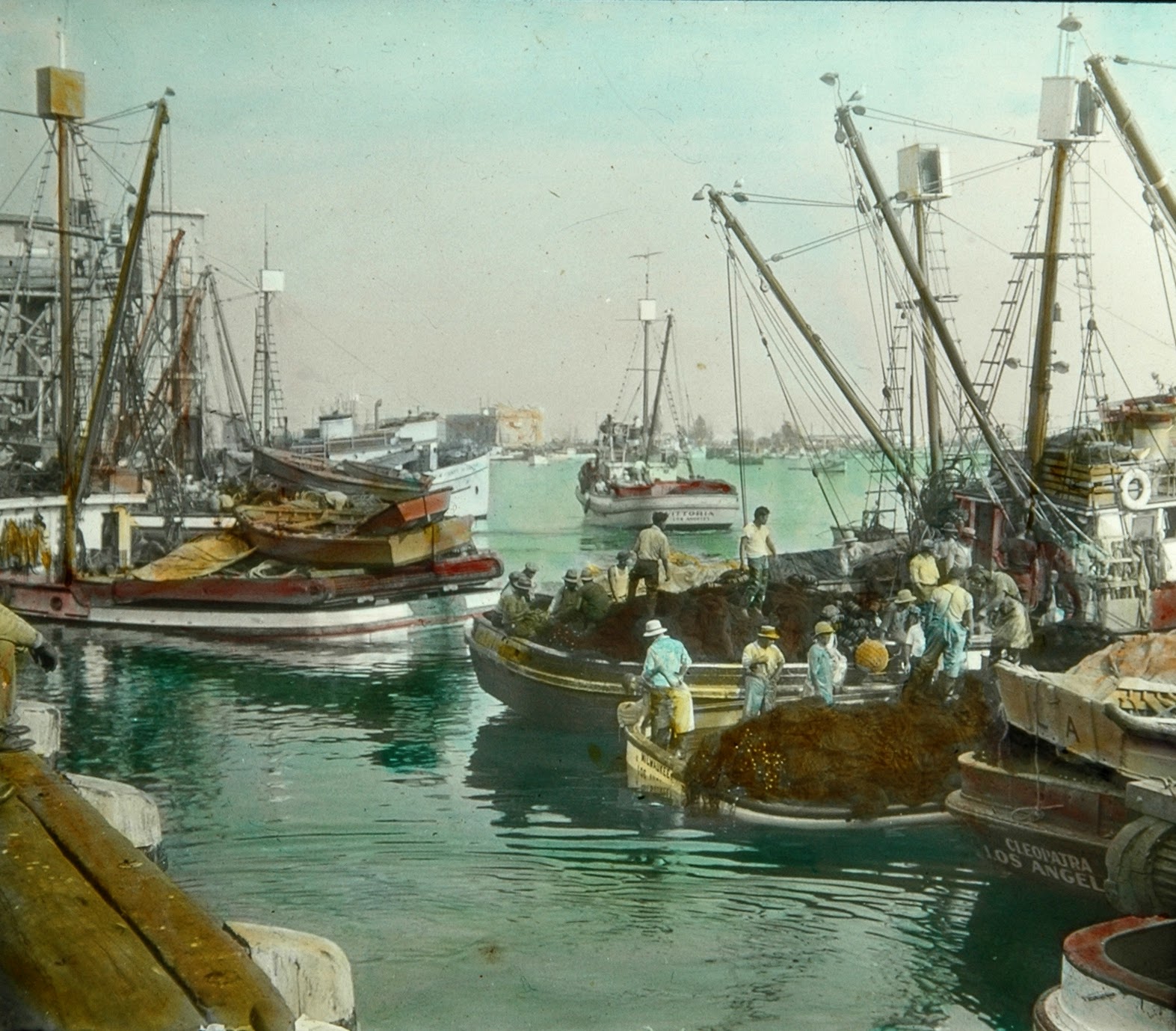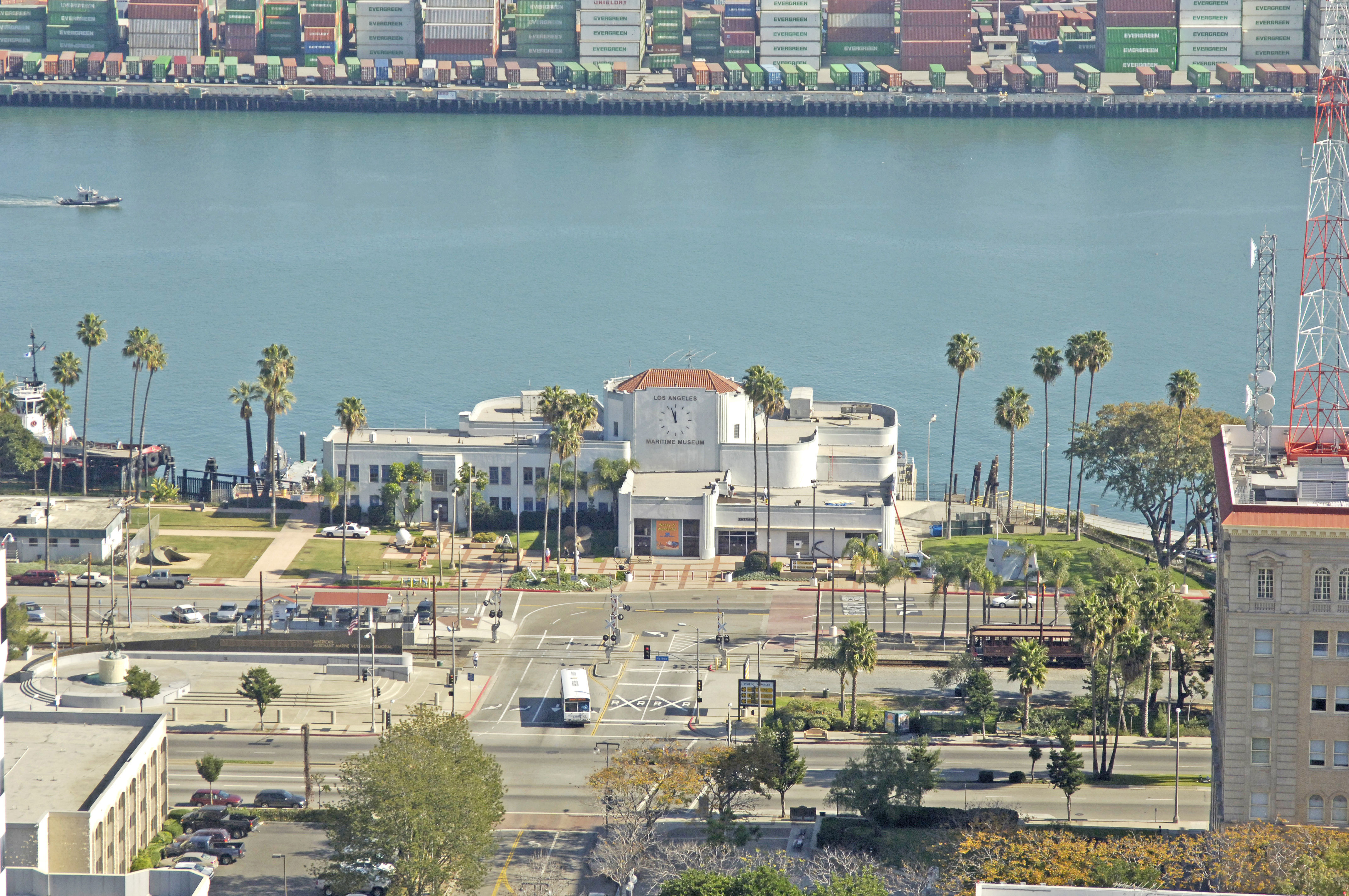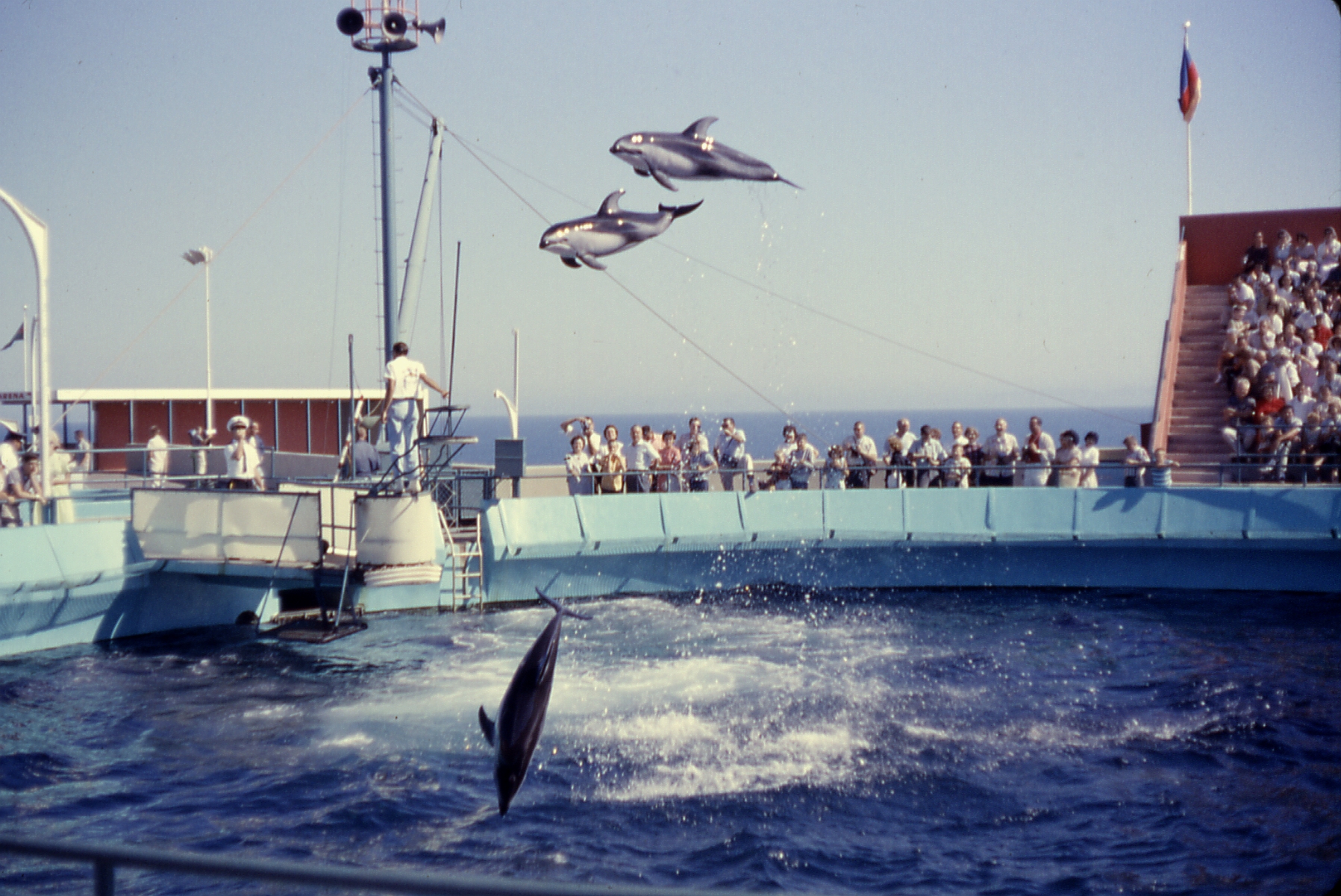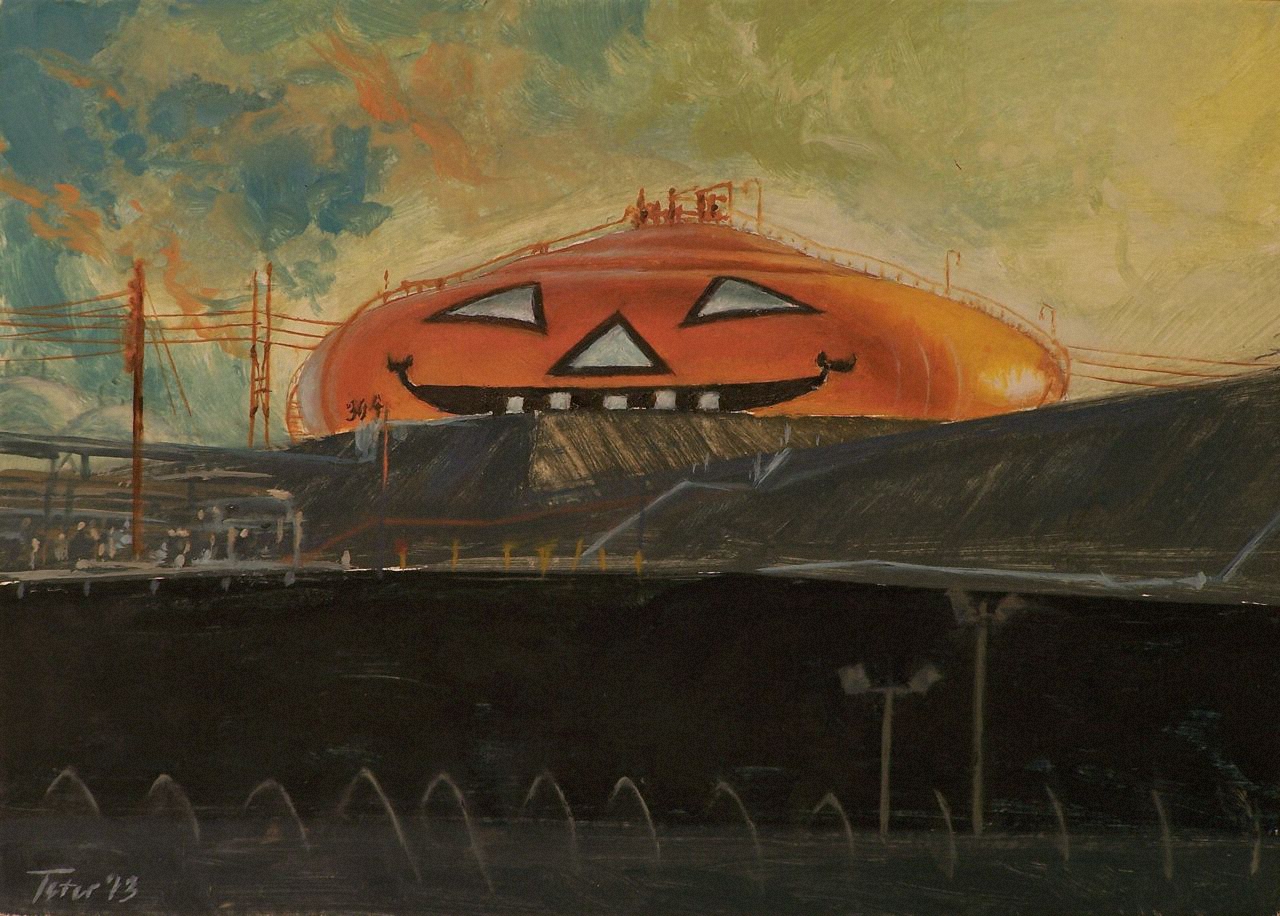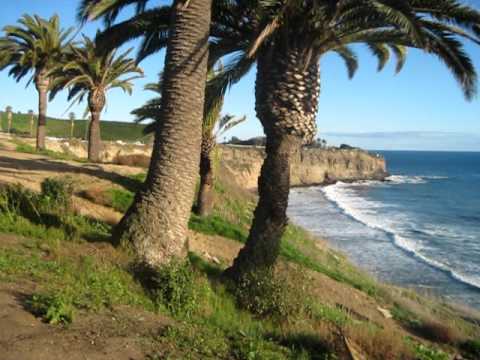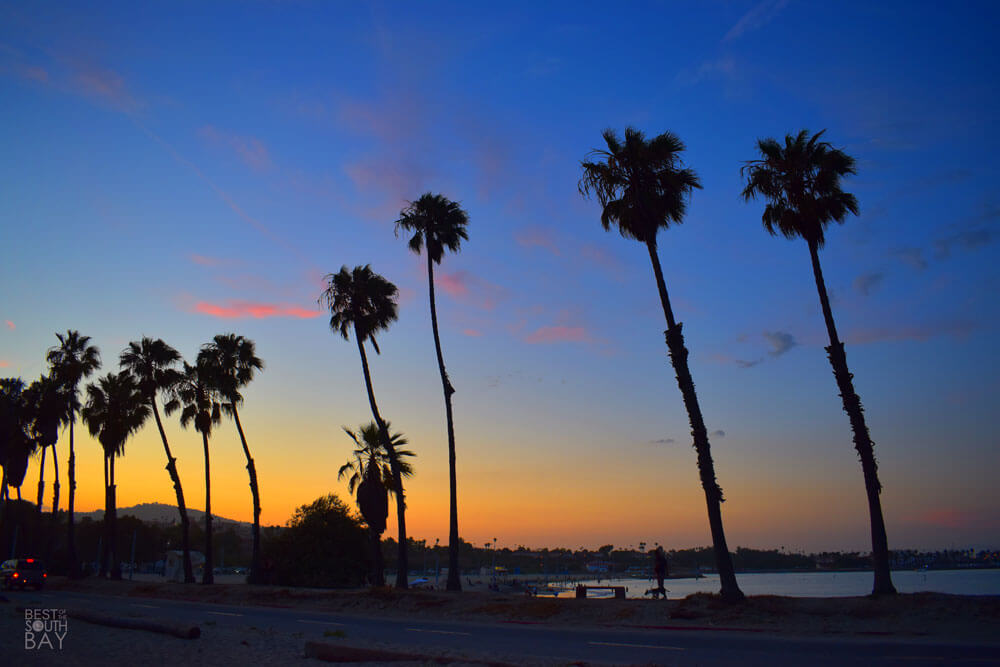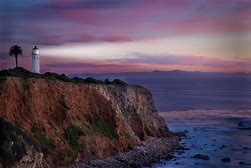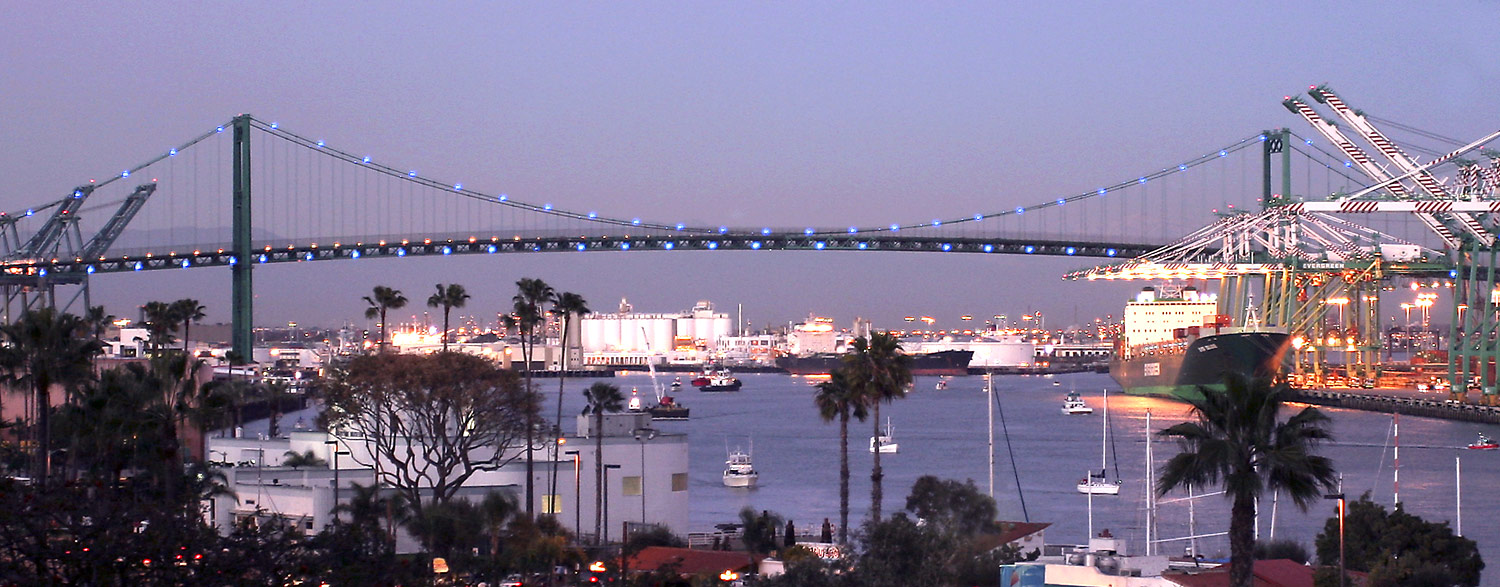San Pedro Timeline
Introduction
San Pedro is a unique out-of-the-way community that has retained its small town charm and picturesque nature
despite having world-scale economies and being named America's Port. The town is unassuming yet has a
fascinating history that has seen it face multiple challenges and not only survive but thirve by capitalizing
on opportunities.
San Pedro civic leaders have adapted to change by continually investing in the harbor and its infrastructure,
and supporting commercial enterprise based on ever changing global markets.
Recently the town leaders have begun a concerted effort to feature, support and improve San Pedro's wealth of historic sites, monuments and architecture,
distinctive neighborhoods, diverse cultures, a wide variety of
arts, crafts, and ideas, unique restaurants, coffeshops, and breweries in a classic downtown and invest in the connection with the upgraded waterfront.
The next phase of investment is planned to leverage the newer economies of research, education, tourism,
space development, renewable energies, and food technologies to compliment trade and carry San Pedro into a future frontier with continued
improvement and prosperity.
With the combination of a classic downtown and waterfront, continued investment in trade and the new economies, ocean and harbor views, temperate climate, cool trade winds, San Pedro is poised for continued success into
the future.
- San Pedro was discovered 50 years afer Columbus and initially did not offer much of immediate exploitation to the Spanish
- The natural benefits of the area including climate, geography, and natural resources
provided a rich template that served as a basis for thriving economies
- Favorable geography: Secluded location on a peninsula, with a natural harbor and nearby flatland sheltered by hills
- Natural resources: Grassland, sea teeming with fish, petroleum
- Investments: Initially resources were invested in deepening the harbor and protecting it with a breakwater, then
investments in docks, storage for shipping goods, tranportation, and further deepening provided the foundation
and continuous accommodation for an ever increasing volume of trade
- Economies: First ranching, trade, fishing, canning, oil drilling,
then shipbuilding, tourism, recreational boating
- Challenges: San Pedro has made steady progress despite facing several challenges throughout its existence: periods of severe drought, intense flooding, two tsunamis, 1933 Long Beach earthquake,
three major explosions on the harbor, two huge landslides including the Sunken City disaster; and more significant: major economic depression and several recessions, depleted fish stocks, changing consumer and industrial demands,
automation, containerization, and cheaper labor overseas
- Adaptation: Throughout its history, San Pedro was able to cope with the challenges, and transform into new economies with new technologies.
San Pedro reinvented itself time and again when economies, such as ranching, fishing, canning diminished in favor of trade, transport, shipbuilding, petroleum, tourism
- Preparing for the future: Now San Pedro is embracing and investing in the next wave of newer economies such as marine research and education, new food science,
new sources of energy, and space technology
Timeline: San Pedro has a unique history that can be broken into arbitrary phases and depicted with words, postcards, art,
maps, and photos. One way to look at it:
- Prehistory
- Spanish Discovery and Colonization: 1542-1821
- Mexican Era: 1822-1846
- Transition and Foundation: 1850-1897
- Economic Expansion and Growth: 1897-1946
- Post World War 2 Economic Boom: 1946-1999
- Reinvestment into the New Future: 1999-Future
Remembering San Pedro: The following categories appear at significant points in the timeline to provide a tableu of landmarks,
sites, establishments, names, and events that are intrinsic to San Pedro history. The associated years identify location in the timeline that signifies the earliest, latest or most notable.
- Landmarks (2012)
- Historic Sites (2012)
- Parks and Recreation (1886)
- Streets of San Pedro (1937)
- Businesses (1990)
- Restaurants (1925)
- Schools (1903)
- Theaters (1906)
- Movies filmed in San Pedro (1914)
- Cool Places in the Sixties for Kids to Visit (1963)
- Major Climate, Earthquake, Landslide, Explosion Events (1863)
Did you know that San Pedro.....
- was incorporated as a city in 1888 by a vote of 145 to 57 and the newly incoporated city lasted only 21 years? (1888)
- was not the last stop on Cabrillo's voyage of discovery and that he died on Catalina Island? (1542)
- Californio residents arrested the first involuntary American visitor, a shipwreck victim, as a pirate? (1818)
- was in a 7 year legal battle with a robber baron to determine whether San Pedro or Santa Monica would become the Port of Los Angeles? (1897)
- hosted an Olympic event? (1932)
- was the site of a major longshore strike where Upton Sinclair was arrested? (1923)
- was the location of Cecille B. DeMille's first movie? (1914)
- was the location for over 300 major motion pictures, including a 1984 movie filmed at San Pedro High School? (1914)
- had an international airport? (1925-1941)
- is the hometown of the current American Ballet Theatre principal ballerina? (2015)
- had the 1st railroad in Southern California? (1869)
- has the world's largest jack-o-lantern? (1952)
- had a resident who floated to 15,000 feet in his lawnchair? (1982)
- is the hometown of an astronaut who was the second woman and first mother in space? (1984)
- had a local busineman who sued Albert Einstein for using his unified field theory? (1931)
- played a supporting role in the 1933 movie King Kong as Skull Island? (1914)
- was called the "hell of California" by sailors involved in mid 1800s merchant trade due to the distance they had to row and the hills they had to climb?
- is the birthplace of five Olympic athletes? (1978)
Random San Pedro and Port of Los Angeles statistics
- San Pedro Population = 86,000
- San Pedro Area = 12 square miles
- Harbor is 7500 acres: Water = 3200 acres, Land = 4300 acres
- Waterfront = 43 miles
- Main channel = 53 feet deep
- Cargo terminals = 27
- On-dock rail = 113 miles
- 15 Marinas, 3736 Recreational boat slips
- 86 Ship to shore cranes
- Port of Los Angeles is the number one container port in the US for every year since 2000
- Port of Los Angeles:
- 9.5 million containers handled in 2018
- 19th busiest in the world (combined with Long Beach = 10 busiest in the world)
- 40% of west coast's market share (combined with Long Beach = 73% of west coast market share)
- 18% of the US market share (combined with Long Beach = 32% of the US market share)
- 148,000 jobs in Los Angeles (1 in 13)
- Economic Statistics 2018
- Cargo Value = $297 Billion
- Operating Revenue = $491 Million
- Operating Expenses = $237 Million
- Capital Improvement Budget = $58 Million
- San Pedro Land Distribution
- Single family dwellings = 40%
- Multiple family dwellings = 25%
- Open space = 13% (494 acres)
- Public facilities = 9%
- Industrial = 7%
- Commercial = 6%
Prehistory

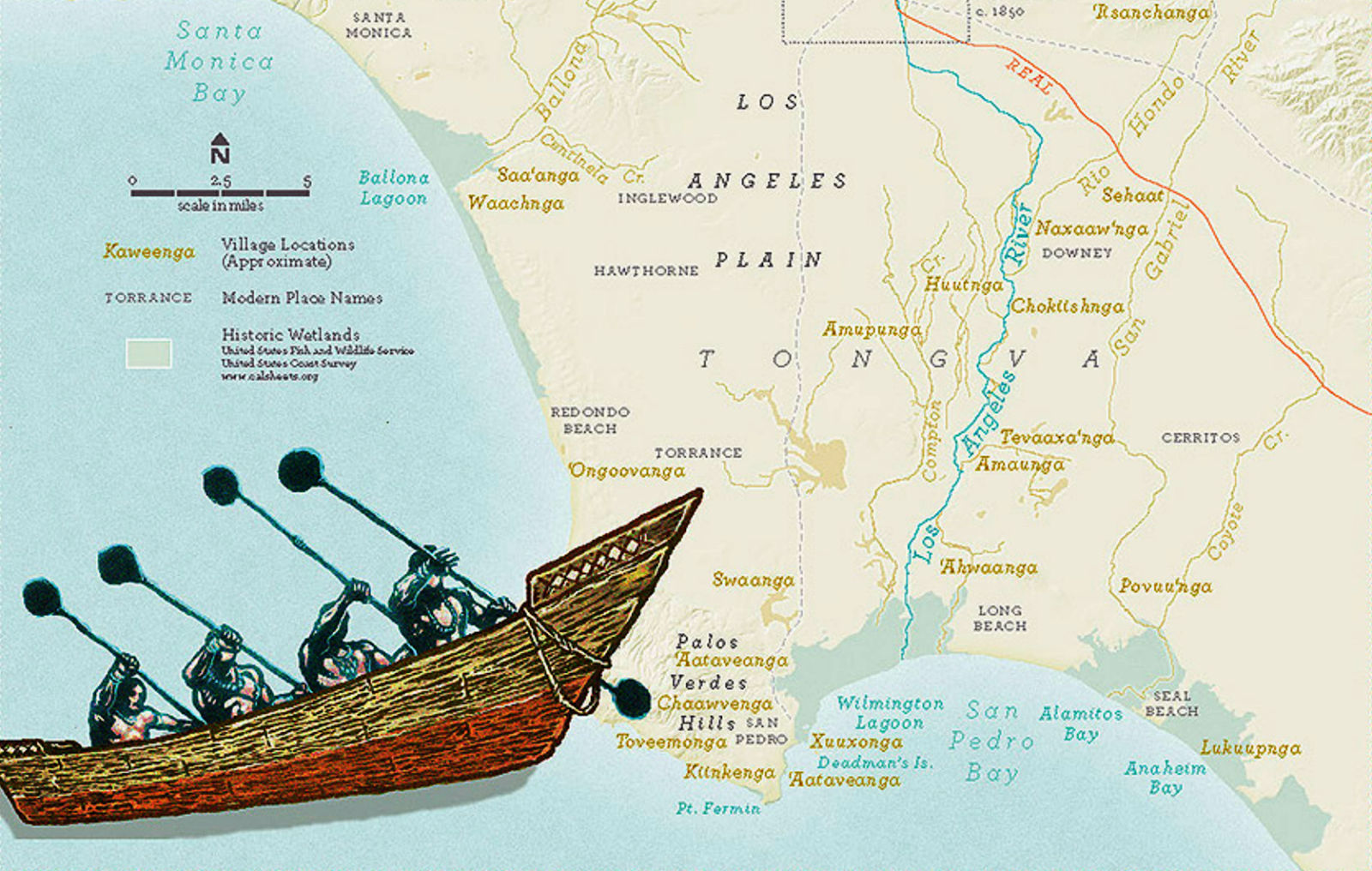
Prehistory: Los Angeles Area ⁄ Palos Verdes Peninsula Populated by the Tongva — Gabrieleno
- The Tongva-Gabrieleno Native American people occupied the peninsula, the Los Angeles basin, and the Channel Islands for thousands of years
- Population of this larger area was estimated to be between 5,000 and 10,000 living in small sedentary villages of 50-100 people
- They were descendants of the Uto-Aztecan speaking people from the Sonoran Desert in Arizona who moved west into coastal Southern California approximately 3500 years ago
- They either absorbed or pushed out the Hokan speaking people who were in the region previously
- Archaeological sites in Los Angeles date back 8,000 — 15,000 years
- The Tongva were hunter-gatherers-fishers and traded widely with other groups
- Diet: Primarily consisted of fish, small mammals, acorns, shellfish, but included deer and corn they obtained by trade. They would cook at community fires.
- Called the ″Lords of the Ocean″ due to their mastery of oceangoing canoes. They would travel up and down the coast and to the Channel Islands.
- The Tongva villages in the area centered around the hills and flatlands of today's North Gaffey south toward Point Fermin and around the coast to Malaga Cove and north to Redondo Beach
- The 4 villages in the San Pedro area: Munikang-na (Place of the Small-Large Hill), Tsauving-na (referring to fire), Xuxung-na (referring to big, for the large cemetery in the area), Ataviang-na (Houses by the Water)
- The Tongva had a few sacred sites, ancient village and burial grounds, one of which, Puvunga, is at California State University, Long Beach on the west side of campus near the Japanese Garden at a natural spring
- Their other sacred site, Kuruvungna, is at what is now University High School, West Los Angeles, near the border with Santa Monica at the Serra Springs
- First contact with Europeans occurred in 1542. The Spanish called them Gabrielenos.
- Chowigna and Suangna were two Tongva settlements of many on the peninsula
- The Tongva called the San Pedro area Chaaw and felt that the peninsula was the most beautiful place on Earth
- The Tongva way of life ultimately became extinct due to forced relocation, assimilation, and exposure to European diseases
- The Tongva were relocated to Mission San Gabriel after it was built in 1771
- Today there are four different groups claiming to represent the Tongva people, two of the groups are in a hostile split over the possibility of building a casino. None of these groups have been recognized by the federal government.
- Tongva place names currently in use: Pacoima, Tujunga, Topanga, Cucamonga, Azusa, Cahuenga


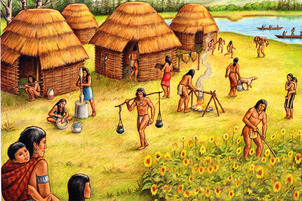

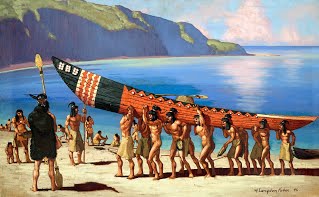
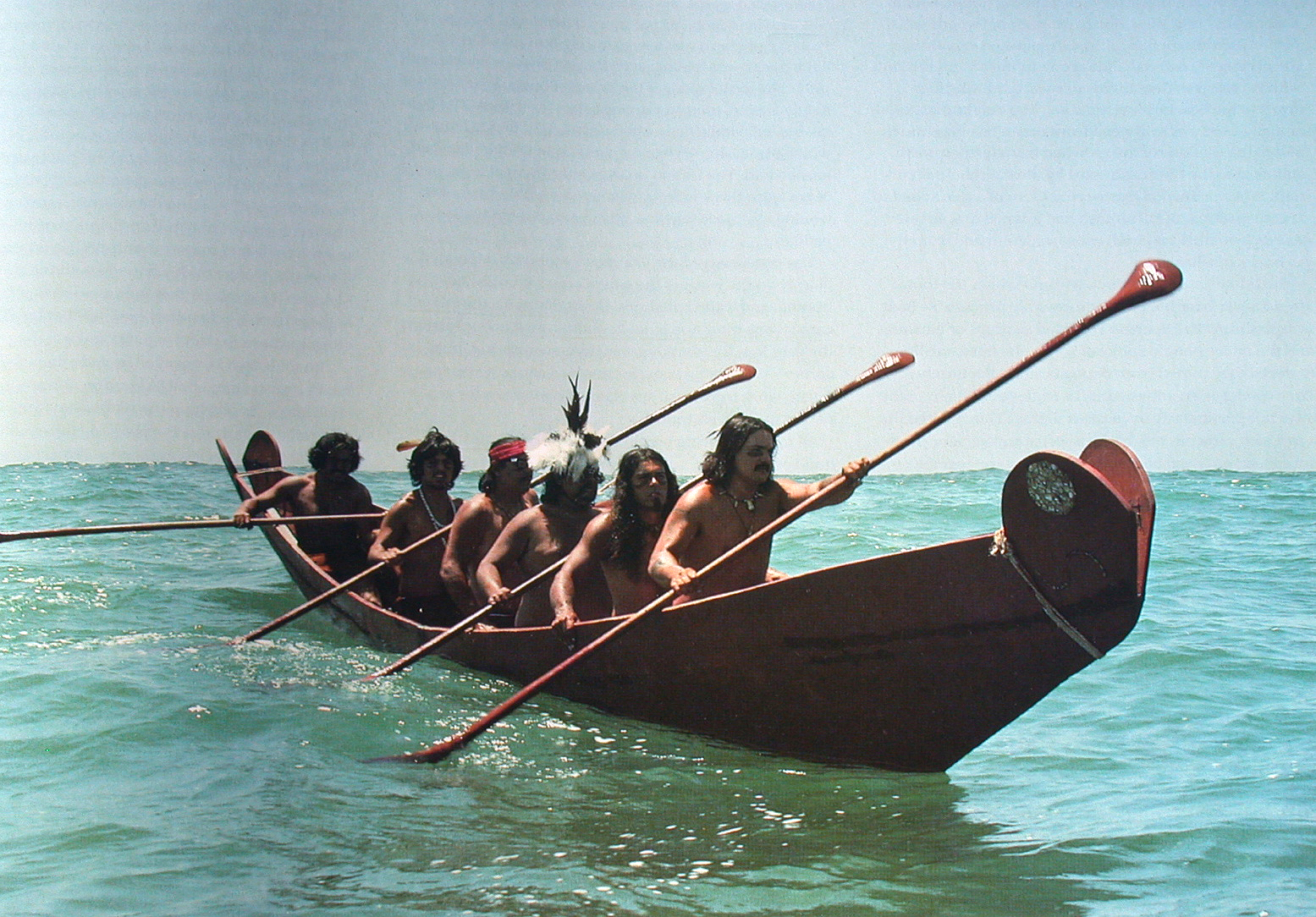



Random San Pedro Postcards and Photos


